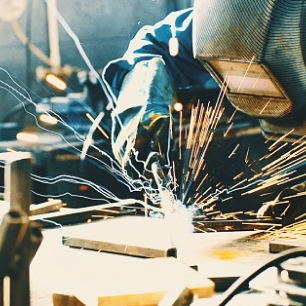Jump to:
Qualification Thoughts
Welder performance qualification testing is an increasingly vital aspect of our role as Certified Welding Inspectors (CWIs). As the industry continues to evolve, performance qualification testing is becoming more integral to ensuring welders have the necessary skills and capabilities. Proper qualification is a key frontline approach to maintaining high standards of quality in welding practices.
As CWIs, we are at the forefront of much of this work, yet performance qualification testing is still somewhat unfamiliar territory for many CWIs. There are many CWIs who are competent and knowledgeable but just haven’t had the opportunity to gain experience with performance qualification. This disparity can be problematic as the demand for qualification testing increases. As demand increases, many less experienced CWIs are being called upon to conduct performance qualification testing. This often creates anxiety for the inspector, who may feel pressured to achieve high pass rates when testing welders. In some cases, this pressure can lead to inexperienced inspectors overstepping their bounds. As the inspector, or qualifier, our job is to observe, evaluate, and document. We observe the welder perform the test, evaluate the finished weldment and test specimens, and document the results. Nothing more, nothing less. Many times, I will get questions from the welder about machine settings or technique. To answer these questions, I point them to the welding procedure specification (WPS). I always begin the qualification test with a review of the WPS the welder will be following and the acceptance criteria to which the weldment will be evaluated. It is not the CWI’s job to coach a welder through the test. It is the CWI’s job to unbiasedly assess and document the welder’s abilities.
I find it best to be upfront with welders. Prior to striking an arc, welders are given the acceptance criteria, and it is explained that this criteria is not my opinion of a good weld. The criteria comes directly from the applicable governing document. Being forward and upfront about expectations greatly reduces confusion, misunderstandings, and even the potential for conflict. When evaluating test specimens, adherence to the acceptance criteria is crucial. Every welder you qualify carries your stamp of approval and, in turn, possesses the ability to influence your reputation. It isn’t always glamorous, but unwavering compliance to the governing documents will help to solidify your reputation as a creditable inspector. It is up to us, as CWIs, to uphold the prestige of this credential. We have all dedicated countless years to earning and achieving the title of Certified Welding Inspector and the respect that comes with it. I, for one, do not take that lightly. The title of CWI not only carries great respect in the industry; it also carries the burden of great responsibility. It is our responsibility to ensure standards are met and upheld and, in the case of qualification testing, to ensure the abilities of the welders are up to par for the tasks they are given.
CURT GREEN (curtis.green@kctcs.edu), an AWS SCWI, AWS CWE, and ASNT NDT Level III, is the associate professor of welding technology at West Kentucky Community & Technical College, Paducah, Ky., and owner of AccuWeld LLC,
Golconda, Ill.


